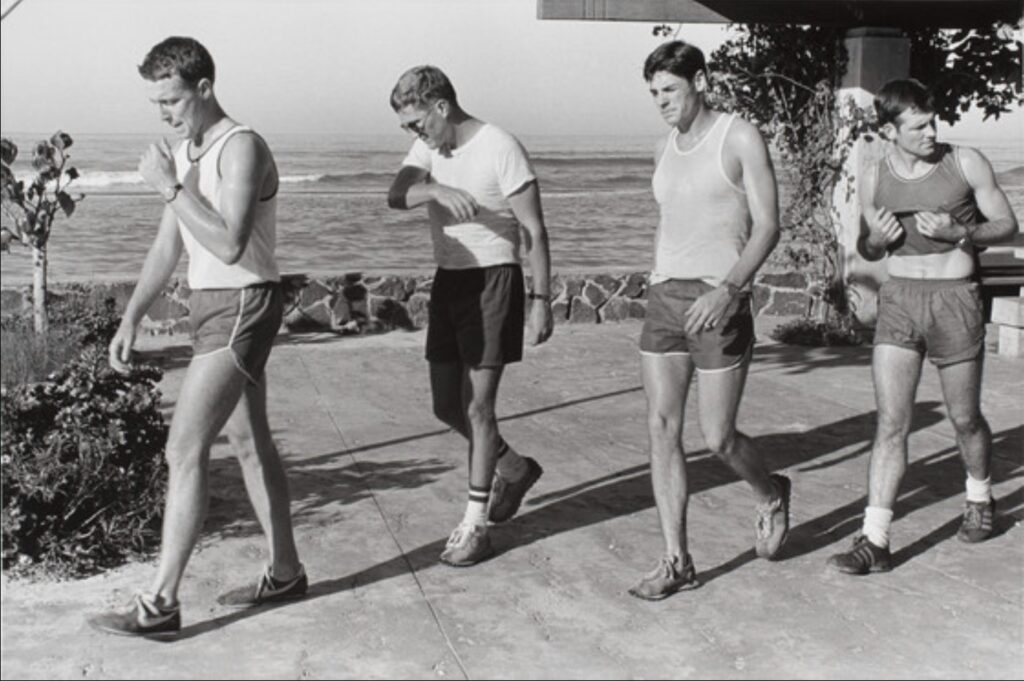“The best surfer out there is the one having the most fun”
– Phil Edwards, first professional surfer
Polynesia, the Pacific, and the Birthplace of Surfing
Predating written history, the creators of surfing differ depending on who you ask. Citing petroglyphs found in Hawaiian volcanic rock, scholars believe surfing began in Polynesia in the 1500s. First-written accounts were by Western explorers from the Dolphin crew off the coast of Tahiti in 1767. A few years later, sailors on James Cook’s HMS Endeavor view surfing in Hawai’i. Cook continues writing about it through 1779. He notes that Hawai’ians called it he’e Nalu, which was translated to mean wave-sliding. While others note Samoa and Tonga as surfing’s birthplace, it’s widely agreed upon the first boards ridden were on the expansive waves of the South Pacific.
Unfortunately, surfing took a hiatus in much of the world after its introduction to Western travelers. With Western explorers came Western missionaries who outlawed surfing and other forms of artistic expression in an effort to convert the natives and suppress their traditions. This led to a steep decline in surfing moving into the 18th century and within one hundred years surfing was a lost art.
Surfing’s Resurgence
Surfing’s resurgence came on two fronts. The first occurred in the early 1900s when a native Irish-Hawaiian, George Freeth, was brought to Southern California by Henry Huntington (namesake of the infamous Huntington Beach). Huntington wanted to promote the opening of a new railroad and used a surfing performance from George to draw a crowd. His stunts left the group in awe and George was labeled the “man that could walk on water”. Following this, hotels up and down the California coastline and beachside estates used surfing as a way to promote staying with them. Surfing was finally getting the recognition it deserved and planted the seed for generations of adrenaline junkies.
While this was happening in California, a grassroots surfing movement propelled by Tommy Walker and Olympian Duke Kahanamoku was gaining steam in the Southern Hemisphere. Tommy and Duke mastered Sydney’s Manly Beach on 10-foot boards bought in Hawai’i. They were so advanced for their time that Duke later went on to be recognized as the Father of Modern Surfing.

From here surfing gradually gained more popularity before transitioning from a counterculture movement to mainstream in the 1960s. Movies like Gidget (1959), Beach Party (1963), and The Endless Summer (1966) coupled with the rise of SoCal bands like the Beach Boys, grew surfing’s reach exponentially.
Around the time surfing was moving mainstream in music and film, surfboards went through a makeover. Surfboards had historically been longer and ridden in a straight line. This new iteration of boards was shorter, lighter, and aptly named the “short board”. Its makeup allowed riders a more robust arsenal of tricks and aerials in all kinds of swells. As riders improved and the difficulty of tricks became more challenging, surfers were looking to local competitions to showcase their talents. The International Professional Surfers spawned from this, which stood the test of time (albeit with a slight name change), transforming into what is now known as the World Surf League – the leader in competitive surfing.
Evolution to Wakesurfing
At this point in history, surfing was restricted to ocean waves, but inland board sports were beginning to grow in popularity. Towable water sports had been around since water skiing’s inception on the calm waters of Lake Pepin on the Minnesota/Wisconsin border. Water skiing remained popular throughout the 1900s and helped lead to the rise of wakeboarding in the late 1980s. Boat manufacturers recognized the importance of the large wakes required to land most wakeboarding tricks and began engineering boats to cater to those needs. They grew so large that riders could surf behind the boat without a tow rope near the end of the 2000s. Since this time, wake surfing has emerged and grown as a sport and community. This is due to a plethora of things, and not limited to the magnetic surfing culture, the quick learning curve, how easy it is on your body, and because anyone can try.
